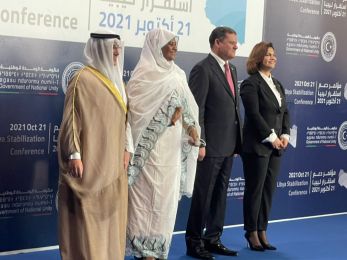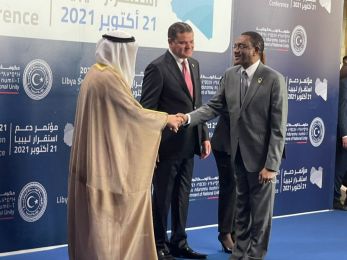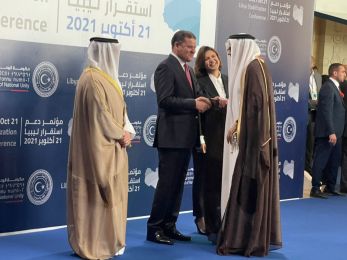PANAPRESS
Panafrican News Agency
South Africa: Why South Africa is closely monitoring Burundi (Feature by Craig Urquhart, PANA Correspondent)
Cape Town, South Africa (PANA) – As Burundi this week lurched towards a military coup that saw fierce fighting between rival army factions and violent protests in the streets of Bujumbura, Pretoria has continued to monitor the situation closely. After all, ties between the two countries run deep.
The birth of a post-apartheid South Africa, through a peacefully-negotiated settlement, coincided with Burundi’s first democratic elections which saw Melchior Ndadaye, leader of the Hutu-dominated Front for Democracy in Burundi (FRODEBU), becoming the first Hutu head of state.
In October 1993, Tutsi soldiers assassinated him, which resulted in a major violence between the Hutu and Tutsi groups. It is estimated that up to 300,000 people, mostly civilians, were killed in the years following the assassination.
In 1996, Pierre Buyoya, a Tutsi, took power through a coup d’état and was sworn in as president in 1998. Under his rule, peace talks, mediated by South Africa, began. Both parties signed agreements in Arusha, Tanzania, and Pretoria, South Africa, to share power.
In 2000, a transitional government was planned as a part of the Arusha Peace and Reconciliation Agreement. It was placed on a trial basis for five years. In 2005, ethnic quotas were formed for determining positions in Burundi's government and Pierre Nkurunziza, a former leader of a rebel group, was elected president.
The recent wave of violence started on 25 April after the ruling party nominated Nkurunziza to run for re-election in June. The country’s constitution states that a President can be popularly elected to two five-year terms, but Nkurunziza maintains he can run for a third term because parliament elected him for his first term, leaving him open to be popularly elected to two terms.
Once again, South Africa intervened and Deputy President Cyril Ramaphosa was dispatched to Tanazania to hold crisis talks with Nkurunziza and other regional leaders to address the crisis. At the same time, Maj.-Gen. Godefroid Niyombare announced on a private radio station that Nkurunziza's mandate is over. However, the rebel leaders were rounded up and Nkurunziza was able to return to the country.
The Times newspaper this week noted that South Africa has a duty to intervene and help restore peace in Burundi, continuing the work started by Mwalimu Julius Nyerere and taken forward by Nelson Mandela.
“What we see on the streets of Bujumbura goes against the efforts of those leaders to bring stability to the continent. Though no country can dictate to the Burundians, it is important to hammer home to Nkurunziza the importance of respecting the Arusha agreement and the constitution that came out of it.
For Africa to progress, its leaders must lead by example and build institutions that not only promote democracy but empower citizens to have a say in how they are governed,” the Johannesburg-based newspaper noted in an editorial.
It remains to be seen how the latest crisis will play itself out, but it is likely that South Africa will continue to play a role in trying to resolve one of Africa’s most complex power struggles.
-0- PANA CU/VAO 16May2015
The birth of a post-apartheid South Africa, through a peacefully-negotiated settlement, coincided with Burundi’s first democratic elections which saw Melchior Ndadaye, leader of the Hutu-dominated Front for Democracy in Burundi (FRODEBU), becoming the first Hutu head of state.
In October 1993, Tutsi soldiers assassinated him, which resulted in a major violence between the Hutu and Tutsi groups. It is estimated that up to 300,000 people, mostly civilians, were killed in the years following the assassination.
In 1996, Pierre Buyoya, a Tutsi, took power through a coup d’état and was sworn in as president in 1998. Under his rule, peace talks, mediated by South Africa, began. Both parties signed agreements in Arusha, Tanzania, and Pretoria, South Africa, to share power.
In 2000, a transitional government was planned as a part of the Arusha Peace and Reconciliation Agreement. It was placed on a trial basis for five years. In 2005, ethnic quotas were formed for determining positions in Burundi's government and Pierre Nkurunziza, a former leader of a rebel group, was elected president.
The recent wave of violence started on 25 April after the ruling party nominated Nkurunziza to run for re-election in June. The country’s constitution states that a President can be popularly elected to two five-year terms, but Nkurunziza maintains he can run for a third term because parliament elected him for his first term, leaving him open to be popularly elected to two terms.
Once again, South Africa intervened and Deputy President Cyril Ramaphosa was dispatched to Tanazania to hold crisis talks with Nkurunziza and other regional leaders to address the crisis. At the same time, Maj.-Gen. Godefroid Niyombare announced on a private radio station that Nkurunziza's mandate is over. However, the rebel leaders were rounded up and Nkurunziza was able to return to the country.
The Times newspaper this week noted that South Africa has a duty to intervene and help restore peace in Burundi, continuing the work started by Mwalimu Julius Nyerere and taken forward by Nelson Mandela.
“What we see on the streets of Bujumbura goes against the efforts of those leaders to bring stability to the continent. Though no country can dictate to the Burundians, it is important to hammer home to Nkurunziza the importance of respecting the Arusha agreement and the constitution that came out of it.
For Africa to progress, its leaders must lead by example and build institutions that not only promote democracy but empower citizens to have a say in how they are governed,” the Johannesburg-based newspaper noted in an editorial.
It remains to be seen how the latest crisis will play itself out, but it is likely that South Africa will continue to play a role in trying to resolve one of Africa’s most complex power struggles.
-0- PANA CU/VAO 16May2015






